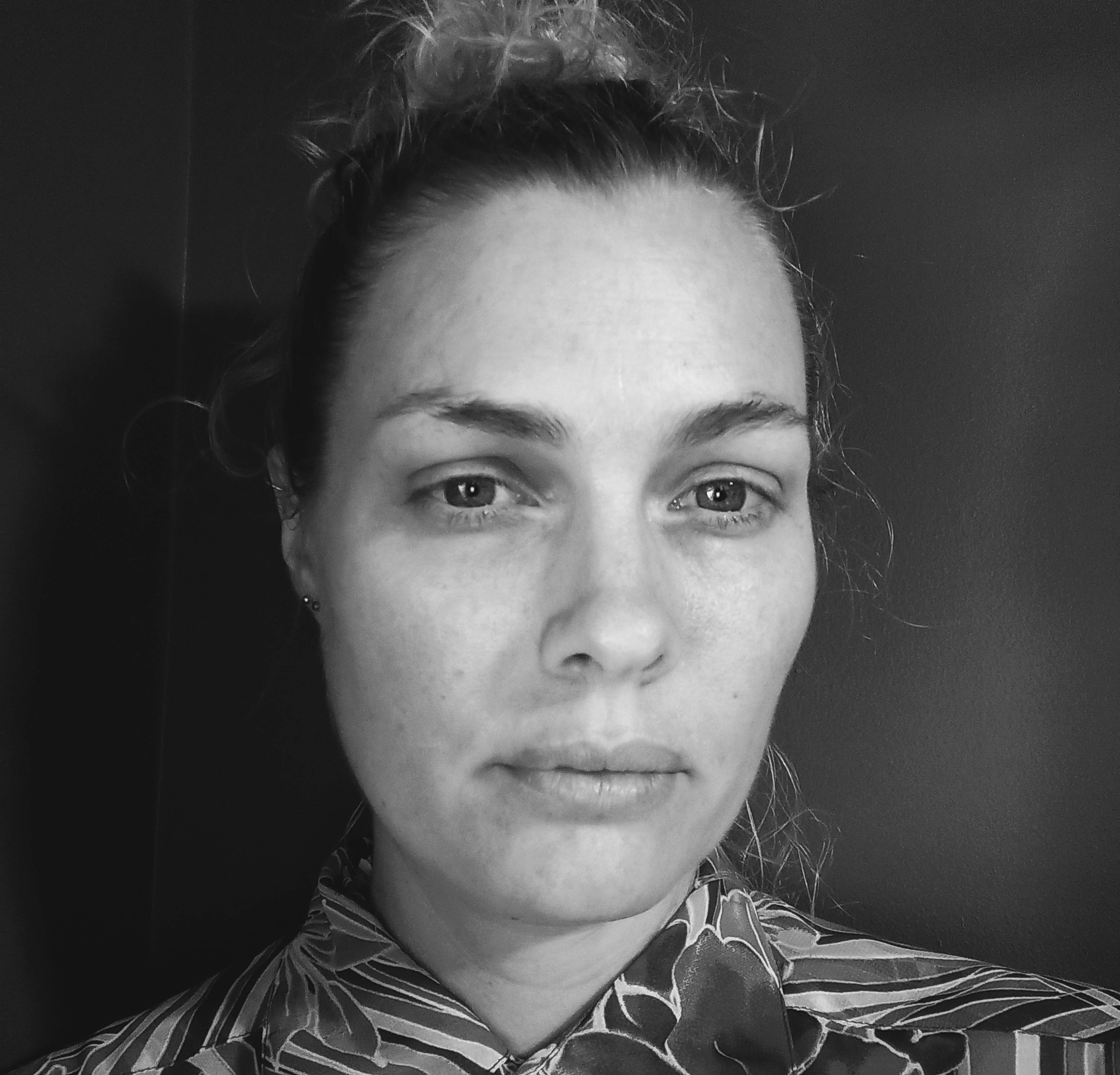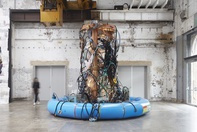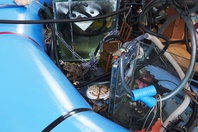Erika Scott
Quandamooka Country, Ngudooroo/Lamb Island, Queensland
2023
Displayed 2023 at Carriageworks

Erika Scott
Born 1987, Biloela, Queensland.
Lives and works Quandamooka Country, Ngudooroo/Lamb Island, Queensland.
Erika Scott works with sculpture and installation. Her maximalist assemblages use discarded objects, furniture and popular culture debris to create elaborate surfaces and forms that explore the tension between image and object. Scott’s process of collecting and configuring material is intuitive, communicating a personal visual language that connects with feeling and sensation. Her works present emotional and sensory landscapes that are ‘portals’ to experience. Through the act of salvaging domestic detritus and modifying its intended use and value, Scott explores broader systems of exchange in society.
Artist text
by Kyle Weise
An old mug sits at the back of my cupboard emblazoned with a Barbara Kruger slogan: ‘You want it. You buy it. You forget it.’ Purchased from a gift shop... somewhere... it now exists in the interstice that defines ‘stuff’: too good to throw out, but having lost its seductive gleam. It is from vast accumulations of ‘stuff,’ bought then forgotten, that Erika Scott constructs sprawling assemblage sculptures.
Scott’s recent works feature secondhand aquariums, in stacks and filled with stuff. They link her practice to the development of consumer culture in the 19th century, where, along with terrariums and cabinets, aquariums were massively popular as part of a mania for collecting, displaying, and enclosing objects and ornaments. As a moving image framed behind rectangular glass, aquariums are a precursor of the contemporary screen, where they linger as screensavers, entwining image and object. Nineteenth-century cultures of display are a crucial context for Scott’s work. During this time, experience and ritual were replaced by an abyss of objects and commodified memories, which is now integrated with screen culture of the 21st century.
Scott’s work preserves the objects she works with, not because of care or enclosure (she often works outdoors) but from the persistent materiality of the stuff itself. Here, the distinction of Scott’s work from recycling is critical. Recycling is the capitalist utopia of a plasticity of stuff, forever being remade into something new and desirable. Scott’s stuff clogs this capitalist ideal of fluidity. Often decaying, twisted, and warped, the objects in her sculptures remain recognisable, if grotesque and perhaps akin to Frankenstein’s monster: a reference literalised in the (re)use of latex horror-themed masks in multiple works, wrapped around playgrounds and hoses.
In The Circadian Cul-de-sac (2023), hoses and liquids feed an enormous hourglass, alluding to the fluid ideal of capitalist flows – always moving, always looking forward – that has led to this accumulation of stuff. Today, the hourglass is a novelty item. Yet the apparent flippancy of the novelty object belies the importance of ‘novelty’ as a concept that guides modernity and its endless stuff: destroying cultures of maintenance to enable the incessant and accelerated production of the new.
As an object, the hourglass accumulates associations, including the Days of our Lives opening theme, propelling us into the iconography of television and daily rituals of window-shopping via its glass screen. Days of our Lives recently moved from broadcast television to streaming, and today the computer screen is the site for compulsive consumption where, in the realm of on-demand capitalism, swirls of images and products are linked via ‘Buy Now with 1-Click.’ Scott’s chaotic accumulations and their intractable materiality interrupt the ideal of a frictionless flow from image to object.
The quotidian televisual banality of the opening of Days of our Lives, comparing human life to ‘sands through the hourglass,’ both signifies and embodies the device’s historical association with mortality. Historically, the hourglass has symbolised not just mortality, but death itself. Scott’s work reanimates this association with death, rather than novelty, via her emphasis on the material accumulation that ‘novelty’ creates. Various lives of the hourglass – novelty ornament, timekeeper enabling industrialisation, symbol of death – coagulate around stuff. Scott’s hourglass, with its plastic bubbles and hoses awash in the petrochemical detritus of overconsumption, looms over us like a makeshift doomsday clock, as humanity and its stuff hurtle towards climate catastrophe.
Erika Scott
3min
Artist's acknowledgements
The artist thanks Peter Knudsen, Archie Moore, Beth Scott, Kelvin Scott and Kerryn Shepherd.

